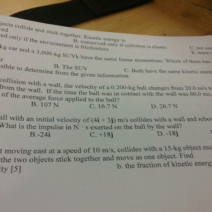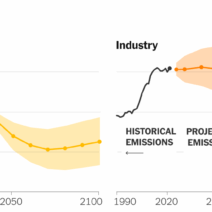The interplay between angular momentum and energy conservation is a cornerstone of classical mechanics, and its implications resonate throughout physics. At first glance, one might assume that if angular momentum is conserved, then energy must be too. However, this notion warrants further examination. The distinction between the conservation of angular momentum and energy illuminates intricate dynamics within physical systems, and its ramifications echo from quantum mechanics to astrophysics.
Angular momentum, fundamentally defined as the product of rotational inertia and angular velocity, is a vector quantity that characterizes the rotational state of an object. Its conservation emerges from symmetrical properties of the physical system involved, specifically, rotational symmetry. If there are no external torques acting on a system, the total angular momentum remains constant. This law holds true across various contexts – from the tranquil spin of a planet to the chaotic rotation of a galaxy. Yet, while angular momentum finds a steadfast guardian in the laws of physics, energy’s conservation is more nuanced.
Energy, described extensively as the capacity to perform work, can assume various forms, such as kinetic, potential, and thermal energy. While both angular momentum and energy are conserved in closed systems, scenarios may arise where angular momentum is maintained while overall energy is not. A prime example is encountered in inelastic collisions, where objects collide and stick together, redistributing energy among them. In such cases, angular momentum can remain conserved while kinetic energy dissipates, transformed into thermal energy or sound, illustrating the potential for divergence between these physical principles.
Consider a diverse array of systems that emphasize this divergence. In an isolated system of two colliding bodies, if they collide inelastically, their combined angular momentum can be conserved even though some kinetic energy dissipates. The process involves a change in the state of the system, highlighting that while angular momentum persists as a salient quantity, the total energy remains unaccounted for in terms of mechanical energy due to the transformation into less usable forms.
Furthermore, exploring phenomena such as gyroscopic motion and precession unveils deeper layers of this temporal dance between angular momentum and energy. When a spinning gyroscope is subjected to an external torque, its angular momentum vector alters direction, a manifestation of precession. The kinetic energy associated with its rotation remains intact; yet, the system’s overall energy state undergoes modification due to the work done against gravitational forces or other acting torques. This leads to an enriched understanding of energy as transcending mere kinetic and potential dimensions—energy can manifest in forms not immediately associated with mechanical work.
Now let us delve deeper into the quantum realm. In quantum mechanics, angular momentum appears in the quantized forms when described by spin and orbital angular momentum. Here, particles exhibit dual characteristics, behaving as both waves and particles. In certain quantum processes, such as atomic transitions, an electron may absorb or emit energy in the form of photons while conserving angular momentum. A photon, for instance, carries angular momentum according to its polarization state. Thus, it becomes evident that energy can be emitted or absorbed without violating angular momentum, further complicating the notion of conservation laws in the quantum domain.
The cosmic scale offers further insights into this fascinating relationship. In scenarios involving black holes or neutron stars, massive figures in the universe’s drama, both symmetry and asymmetry are at play. When stars collapse or protons decay via unique processes, angular momentum is often conserved even as energy escapes, manifesting as gravitational waves or thermal energy, leaving a remnant state that defies straightforward energy conservation. The conservation of these angular momentum facets encapsulates a deep-rooted order amidst a backdrop of chaotic transformation.
This conservation of angular momentum against a backdrop of energy transformation heralds profound implications for scientific investigation and philosophical inquiry. It reflects the intrinsic complexity of nature and challenges the perceived dichotomy between angular momentum and energy. As knowledge deepens, scientists continue to probe and parse these relationships, utilizing observations from both classical and contemporary physics to construct a cohesive narrative that aids our understanding of the universe.
In conclusion, the dialogue between angular momentum and energy conservation embodies a fundamental aspect of physical laws that governs both the macroscopic and microscopic worlds. The exploration of cases where angular momentum may be conserved, even as energy is not, serves to highlight nature’s propensity for complexity. Rather than conforming to simplistic interpretations of these foundational principles, a nuanced understanding elevates the conversation, shedding light on the intricate tapestry of forces and forms that construct our universe. Such revelations not only satisfy scientific curiosity but also promote a deeper appreciation for the enigmatic beauty that lies at the heart of physics.








